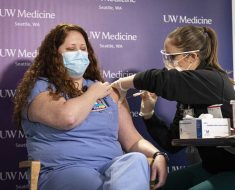It’s part of a nationwide increase in STDs.

For a third year in a row, California has seen a record-breaking rise in sexually transmitted diseases (STDs).
A report from the California Department of Public Health (CDPH) points to a 45 percent increase in certain STDs over the last five years. In 2017, the CDPH counted more than 300,000 cases of gonorrhea, chlamydia, and syphilis.
The increase in STDs has led to serious complications among some pregnant women, resulting in a spike in the number of stillbirths due to syphilis.
When left untreated, gonorrhea and chlamydia can cause pelvic inflammatory disease and infertility, and even increase the risk of ectopic pregnancy in women. Syphilis can impede an infant’s brain development as well as lead to blindness, deafness, and even death.
People under the age of 30 are the most common carriers of STDs. Rates of chlamydia are highest among women, while syphilis and gonorrhea cases are more common among men.
The California Department of Public Health noted the largest increase in stillbirths related to congenital syphilis since 1995 — an alarming 30 cases.
Budget cuts and the rise of STDs
Although 30 cases may not seem like many, this number points to a much larger problem of rising rates of sexually transmitted infections.
In the United States, STDs are rising dramatically according to the Centers for Disease Control and Prevention. There were 2 million cases of chlamydia, gonorrhea, and syphilis in 2016 — a record-breaking number. Syphilis rates increased 18 percent in the United States from 2015 to 2016, and there were 600 reported cases of congenital syphilis (syphilis transferred from mother to child in utero).
These numbers are incredibly high compared to other developed countries.
According to the World Health Organization, nations such as Armenia, Belarus, and Serbia have almost eliminated infections of syphilis from mother to infant in utero.
Since the early 1900s, the medical community has known how to treat syphilis with medication. The rising rates of the disease and its complications observed in recent years, despite the existence of an easily obtainable cure, raises serious questions.
Dr. William Schaffner, professor of preventive medicine and an infectious disease expert at Vanderbilt University Medical Center, said a loss of funding could mean pregnant women aren’t getting needed information.
“At the federal, state, and local level there are budgetary decreases in the public health budgets,” Schaffner told Healthline. “Public health is out there doing good things and cutting its budget prevents it from being as all-encompassing as it once was.”
Traditionally, budget cuts in public health are seen as a loss of service, particularly for those who are economically disadvantaged. Schaffner says that there tends to be higher rates of sexually transmitted diseases among lower socio-economic populations.
“The group that serves this population best is actually public health,” says Schaffner. However, if there is a lack of funding, many of the clinics are forced to close and the number of public health workers is reduced. As the outreach to these disadvantaged populations dwindles, one of the consequences is a rise in illnesses that were previously well-controlled.
This rise in syphilis and other STDs also shows that people are not getting routine care. Specifically, pregnant women are not getting the prenatal care they need to ensure a healthy pregnancy.
“I cannot imagine an obstetrician or family doctor providing prenatal care and not testing for syphilis. We’ve done that since the 1930s,” says Schaffner. Congenital syphilis is an illness that is entirely preventable, he added.
Are smartphones increasing the STD risk?
While public health initiatives are a large factor in the prevention of STDs, other social factors may come into play.
Dr. Barbara Gripshover, medical director of the special immunology unit at University Hospitals Cleveland Medical Center, said “the use of hookup apps and less condom use have been reported as potential factors in California as we have seen here [in Ohio] and nationally as well.”
The ease of connecting with others by a swipe increases the potential number of sexual relationships formed, resulting in an increased risk of STDs. People can use the apps to find a new friend, a life partner, or easily obtainable no-strings attached sex.
Increased drug use, especially with the ongoing opioid epidemic, may also be contributing to the STD rise.
“IV [intravenous] drug use per se does not lead to increased STIs,” says Gripshover. She continues, “some drugs, such as methamphetamine, do increase sexual arousal. Also, sometimes exchange of sex for drugs has been linked with STIs.”
Better sex ed?
Part of this failure to prevent sexually transmitted diseases starts with the health education curriculum, which isn’t comprehensive enough in middle and high school.
“The capacity of many school systems to talk explicitly about human reproduction, sexually transmitted diseases, how to recognize them, what the implications are, and how to prevent them is limited,” says Schaffner.
He believes that those topics can be very uncomfortable. Teachers may be constrained by the nature of the curriculum that they can provide and the frankness in which they can transmit this information to their students.
Dr. Rajiv Bahl is an emergency medicine physician and freelance health writer. You can find him at www.RajivBahlMD.com.
Source: Read Full Article





